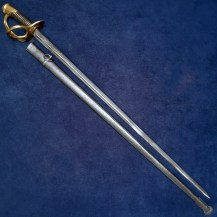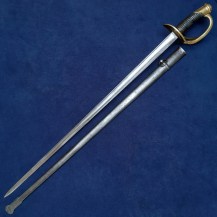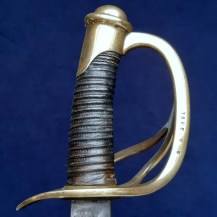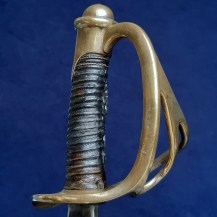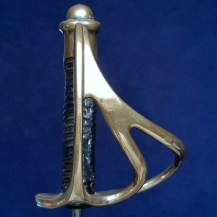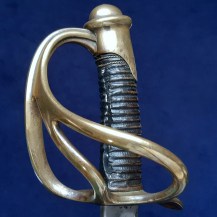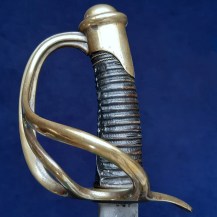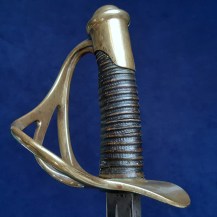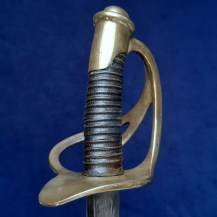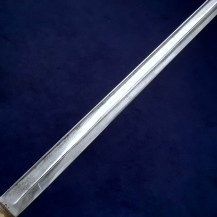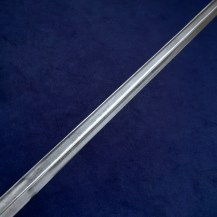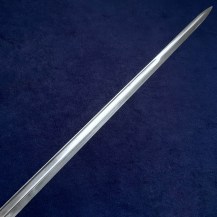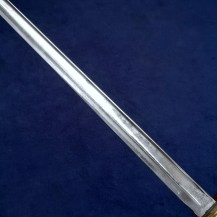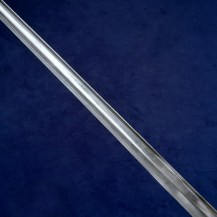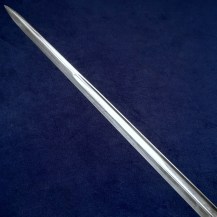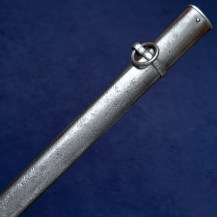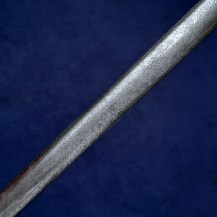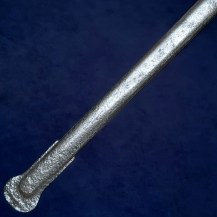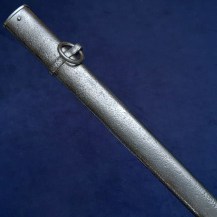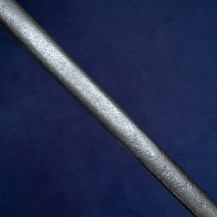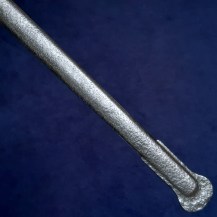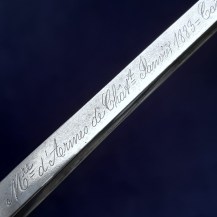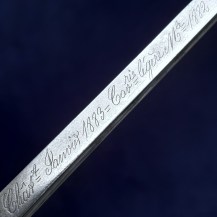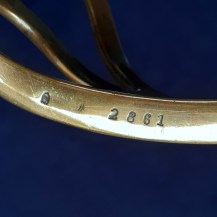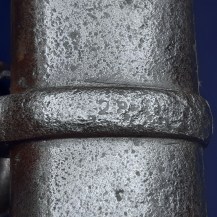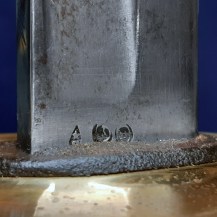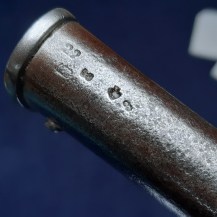French M1882 Light Cavalry Trooper’s Sword by Chatellerault, 1883
Straight fullered blade with spear point. Black leather washer. Brass three-bar hilt, brass oval pommel cap. Grip of black leather over wood, bound with brass wire. Steel scabbard with single band with hanging ring.
The spine of the blade is engraved with ‘Mre d’Armes de Châtt Janvier 1883 Cavrie legere Mle 1882’, indicating that it is the Light Cavalry Model 1882, and was made at the state arsenal at Chatellerault in January 1883, during the Third Republic.
The knucklebow of the hilt is stamped with the serial number ‘2861’, and several poinçons (punch marks). The blade is stamped at the forte on one side with three poinçons, one of a star within a triangle, another of the letter ‘R’ within an circle and a third of the letter ‘B’ within a circle.
The upper band of the scabbard is stamped on one side with the partly legible serial number ’28__’, which suggests it and the sword are probably a matching, original pair. There are a few scattered stamps on the spine of the scabbard near the throat, including the numbers ‘22’ and ‘8’.
Created in 1816, the Manufacture de Chatellerault, near Poitier, grew to become a key arms factory for the French state. In the 1830s it took over from the Maubeuge, Charleville and Klingenthal plants, all of these being considered too close to the German border to be relied upon in a war. During the late 19th and early 20th century production of swords at Chatellerault decreased while firearms manufacture massively increased. However, despite increasing use of machine tools and the nearing obsolescence of the sword, the blades continued to be hand-forged until 1916. Production of swords there ended in 1937.
The blade is bright with only a few areas of light patination mainly in the fuller. Its unsharpened edge has only one very small nick, its tip is undamaged. The brass hilt and pommel have an even patina with a few spots of darker patination. The grip has some handling wear, the leather covering worn away in places on the ridges of the ribs, exposing the wood core. The wire binding of the grip has mostly been lost, with only two loops remaining at the pommel end. There is a split running along most of the grip, perhaps due to leather shrinkage with age or the lack of wire binding to hold the leather in place. This gap has been filled in with a hard black material matching the black leather. The scabbard is free of dents but is pitted overall, most heavily at the chape end.


